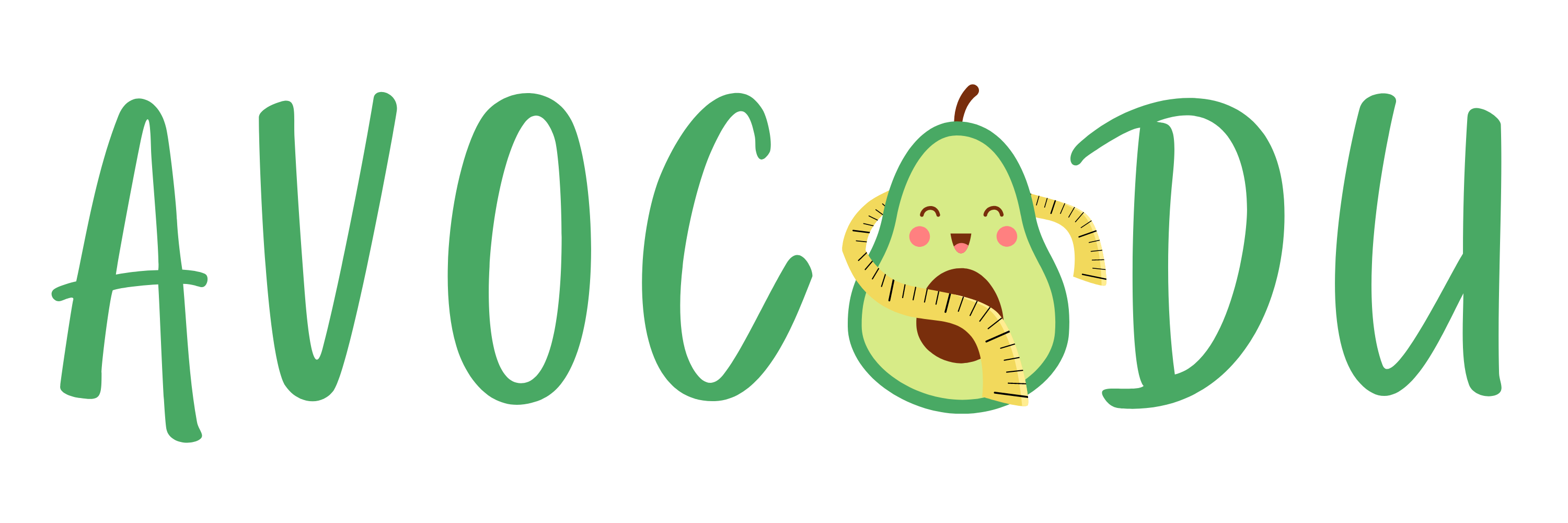Meal Planning 101: A Guide to Healthy Eating
Hello, food lovers and health enthusiasts! Whether you’re a busy bee looking to save time, a thrifty shopper wanting to cut down expenses, or someone on a quest for a healthier lifestyle, meal planning is a game changer.
Unlock meal planning success with this guide to healthy eating, focusing on balanced meals, adaptability, and a nourishing lifestyle.
This post may contain affiliate links, which helps keep this content free. Please read our disclosure for more info.
The Basics of Meal Planning
Just like laying the foundation is crucial before building a house, having a good grasp of meal planning basics is essential for a successful and sustainable practice.
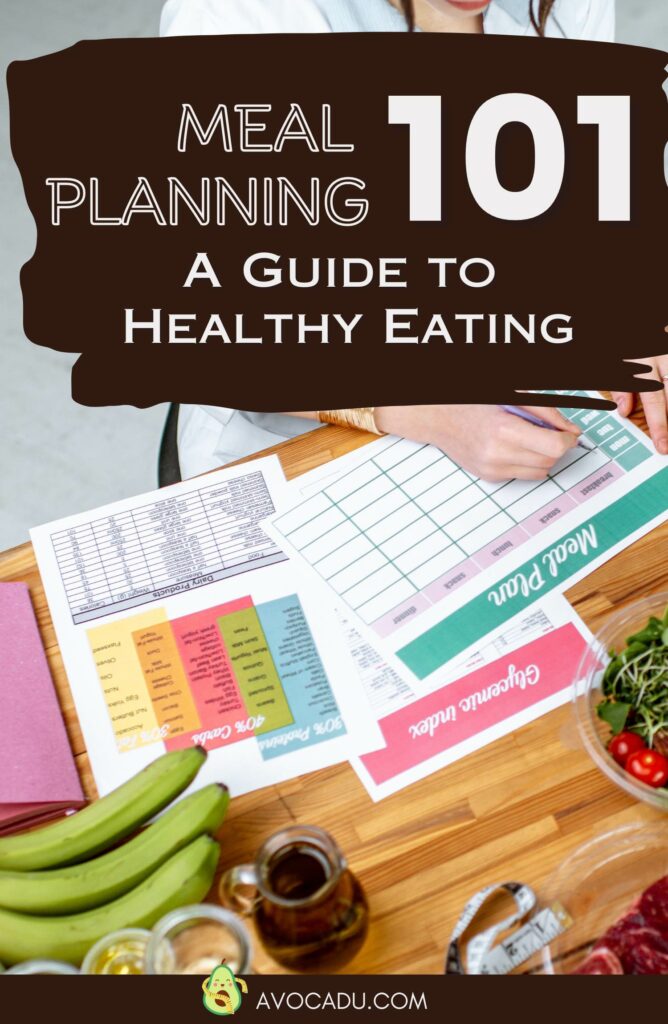
What is Meal Planning?
Think of meal planning as your weekly or monthly food blueprint. It’s deciding in advance what scrumptious meals you’ll have, and getting all the ingredients ready.
This means, instead of frantically rummaging through your fridge at dinnertime, you’ll have a clear plan to follow. It’s more than just daily cooking; it’s like being the architect of your kitchen!
Benefits of Meal Planning
Saves Time and Reduces Stress: By planning ahead, you’ll avoid the last-minute panic. Knowing exactly what’s on the menu means you can dive straight into cooking. This leaves more time for you to kick back and enjoy your meals!
Saves Money: When you shop with a purpose, you’re less likely to make impulsive purchases. You can also take advantage of bulk buying and store promotions. Plus, by utilizing the ingredients you already have, you’ll find that your grocery bills shrink as if by magic!
Improves Nutrition and Promotes a Balanced Diet: Planning allows you to thoughtfully include various food groups in your meals. This ensures that your body gets the right mix of nutrients. Remember, a rainbow on your plate leads to a sparkle in your step!
Related Article: 16 Gluten-Free Low-Calorie Meals That Fill You Up
Minimizes Food Waste: Ever had to throw away produce that went bad before you could use it? With meal planning, you’ll only buy what you need. This not only saves money but also helps in reducing food waste. You’ll be an eco-hero, and the Earth will thank you!
Cultivates Mindful Eating: By planning your meals, you become more aware of what you’re consuming. This can help in making healthier choices and paying attention to your body’s signals.
Encourages Variety: No more getting stuck in a food rut! Meal planning lets you experiment with different cuisines and ingredients. Surprise your taste buds with something new every week!
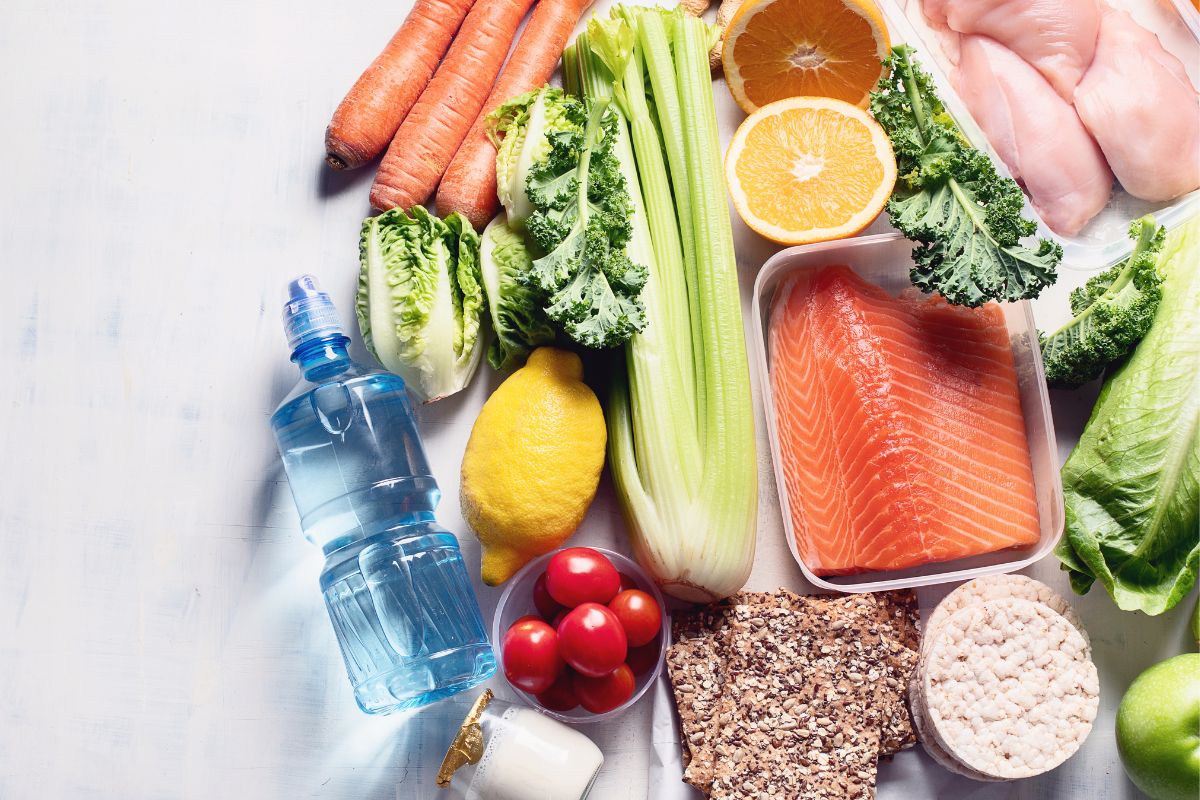
Setting Your Goals and Preferences
It’s important to align your meal plan with your goals and preferences. Imagine trying to fit into clothes without knowing your size; the same applies here.
Tailoring your meal plan ensures it’s a perfect fit for your lifestyle and taste buds.
Determine Nutritional Needs
Your nutritional needs are as unique as your fingerprint! They depend on a mix of factors including your age, activity level, and health goals.
Age: As we age, our metabolism changes and so do our nutritional requirements. For example, growing kids need more calcium for their bones, while seniors might need more vitamin D.
Activity Level: An athlete and a desk jockey need different amounts of fuel, right? If you’re breaking a sweat regularly, you’ll need more calories and nutrients to keep you going.
Case in point: My teenage son hits the gym daily and is focused on building muscle. He requires 3,500+ calories a day!
Health Goals: Whether you’re looking to shed some pounds, gain muscle, or manage a health condition, your meal plan should be your ally in achieving these goals. For example, someone with diabetes might focus on low glycemic foods.
Related Article: 19 Make-Ahead Meals for Weight Loss
Dietary Preferences and Restrictions

This is where you let your taste buds chime in! From vegetarian to gluten-free, your meal plan should reflect your dietary choices and needs. Here are a few things to consider:
Cultural Preferences: Traditional dishes can be rich in history and flavor. Include your family favorites.
Vegetarian, Vegan, or Omnivore: Depending on whether you include animal products or not, make sure your plan has the right sources of protein, iron, and other nutrients.
Allergies or Intolerances: Gluten, dairy, nuts – if these or others are a no-go for you, there are still countless scrumptious options available.
Personal Likes and Dislikes: Love avocados? Detest broccoli? It’s your meal plan; make sure it’s filled with foods that make you happy!
Related Article: 12 Paleo Dinner Recipes for Weight Loss
Caloric Intake
Don’t worry, this isn’t a math class, but keeping an eye on the calories helps in balancing what you eat with what you burn.
Understanding Calories: Calories are basically the energy that food provides. Consuming too many or too few can have consequences on your health and energy levels.
Calculating Daily Caloric Needs: There are handy calculators online for your daily caloric needs. It’s based on your age, gender, activity level, and goals.
Quality Over Quantity: Remember, not all calories are created equal. Focus on nutrient-dense foods that provide you with essential vitamins and minerals rather than just empty calories.
Building a Balanced Plate
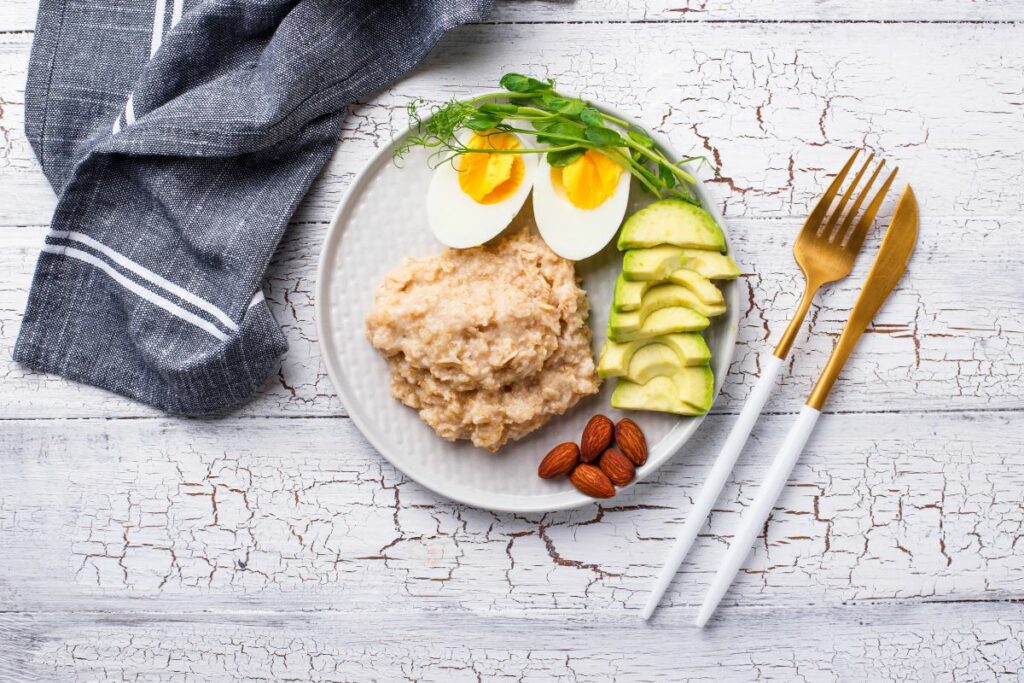
With your goals set, it’s time to become the Michelangelo of meal planning by building a balanced plate!
A well-balanced meal is like a symphony, with each nutrient playing a vital part in the harmony of your health. Let’s see how you can turn your plate into a nutritional masterpiece.
Understanding Macronutrients
Picture your plate as a canvas, with carbs, proteins, and fats as the colors. You need all three for a masterpiece! These macronutrients provide the energy to keep you up and running.
- Carbohydrates: Often misunderstood, carbs are not the enemy! They’re your body’s primary source of energy. Choose complex carbs like whole grains, legumes, and fruits for sustained energy.
- Proteins: These are the building blocks of your body. Whether you’re a fan of chicken, tofu, or beans, proteins are essential for repairing tissues and maintaining muscle mass.
- Fats: Don’t shy away from fats; just choose wisely! Opt for unsaturated fats found in nuts, seeds, and avocados. They’re crucial for brain function and absorbing vitamins.
Related Article: 15 Quick, Low-Carb Dinner Recipes
Incorporating Micronutrients
Sprinkle your plate with vitamins and minerals – they’re like the glitter on your canvas. Leafy greens, fruits, and nuts are Mother Nature’s own multivitamins.
- Vitamins: These are your body’s little helpers. From boosting your immune system to helping blood clot, vitamins have diverse roles.
- Minerals: Calcium for bones, iron for carrying oxygen, and potassium for heart health – minerals are essential!
- Fiber and Antioxidants: Often overlooked, fiber keeps your digestive system happy, while antioxidants fight off free radicals.
The Role of Hydration Drink up!

Water is the elixir of life. Keep a bottle nearby and add some zing with a slice of lemon or a mint leaf.
- Why It’s Essential: Water transports nutrients, regulates body temperature, and keeps joints lubricated.
- How Much to Drink: The common recommendation is eight 8-ounce glasses a day, but it can vary. Listen to your thirst and pay attention to the color of your urine – pale yellow is the goal.
- Other Sources: Don’t forget that fruits, veggies, and beverages like tea also contribute to your hydration.
Portion Control
Having a buffet every meal is tempting, but controlling portions helps in maintaining a balanced diet.
- Understanding Portions: Portion sizes have ballooned over the years. Being mindful of portion sizes helps you consume the right amount for your body.
- Tips for Portion Control: Use smaller plates to naturally reduce portions without feeling deprived. Also, try plating your meals instead of family-style serving to avoid going back for seconds out of habit.
- Listening to Your Body: Pay attention to hunger cues. Eating slowly and savoring your food can help recognize when you’re satisfied.
Creating Your Meal Plan
You’ve laid the groundwork, learned about nutrients, and now it’s time for the pièce de résistance – creating your meal plan. This step is where creativity meets strategy. It’s like piecing together a culinary puzzle that is both delicious and nourishing.
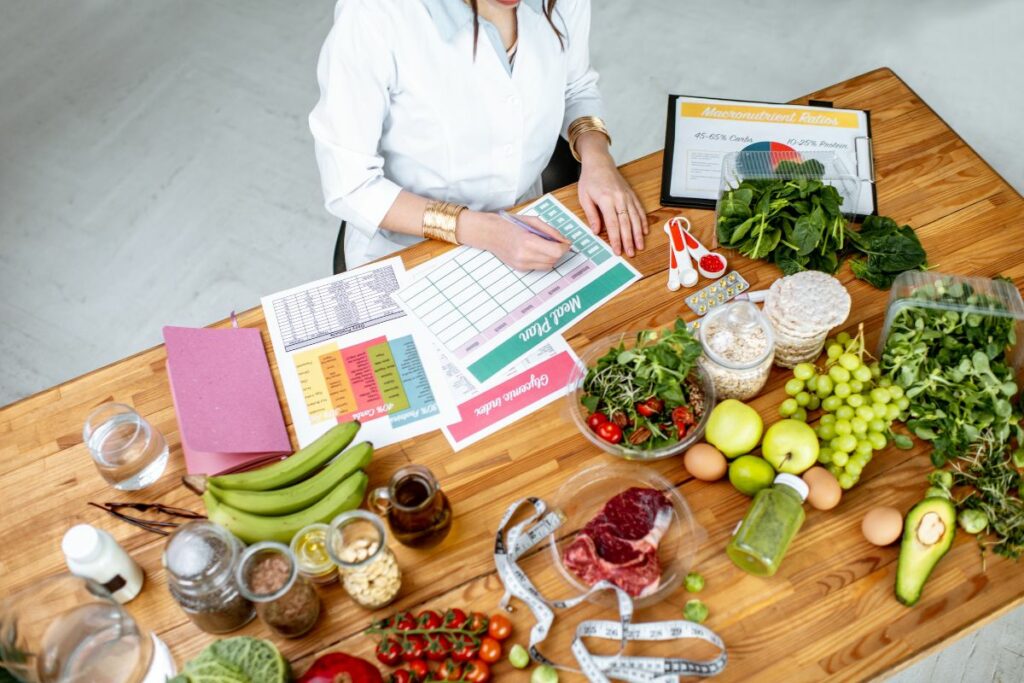
Brainstorm and Research Recipes
The internet is an endless cookbook. Browse, explore, and don’t forget Grandma’s recipes. Collect a variety that makes your heart sing and your stomach growl.
Find Inspiration: Pinterest, food blogs, and even Instagram can be gold mines for recipes. Be adventurous and explore cuisines from around the world.
Healthy Twists: Have a favorite dish that’s a guilty pleasure? Try to find or create a healthier version!
Recipe Organization: Keep your treasured finds organized. Use an app, a digital document, or go old school with a recipe box.
Create a Weekly or Monthly Menu
Lay out your culinary masterpieces over the week or month. Balance is key. Include a mix of vegetables, proteins, and grains.
Diverse Menu: Avoid monotony by mixing up flavors, cuisines, and types of meals. Maybe have Taco Tuesday and Stir-Fry Friday?
Leftovers Are Your Friends: Plan for leftovers! They can be lifesavers for busy days and reduce cooking time.
Flexible Plans: Leave room for spontaneity. Maybe you’ll crave something specific, or there’s a surprise potluck. Flexibility prevents food waste and keeps the joy in cooking.
Make a Shopping List

Armed with your menu, create a shopping list. Organize it by aisle and keep an eye on seasonal produce.
Staples and Special Ingredients: Make sure you have staples like wild rice, quinoa, and spices. Add special ingredients needed for particular recipes.
Seasonal and Local: Opt for seasonal and local produce. They’re fresher, tastier, and often more affordable.
Double-Check: Before heading out, double-check your pantry to avoid buying what you already have.
Prepping and Cooking
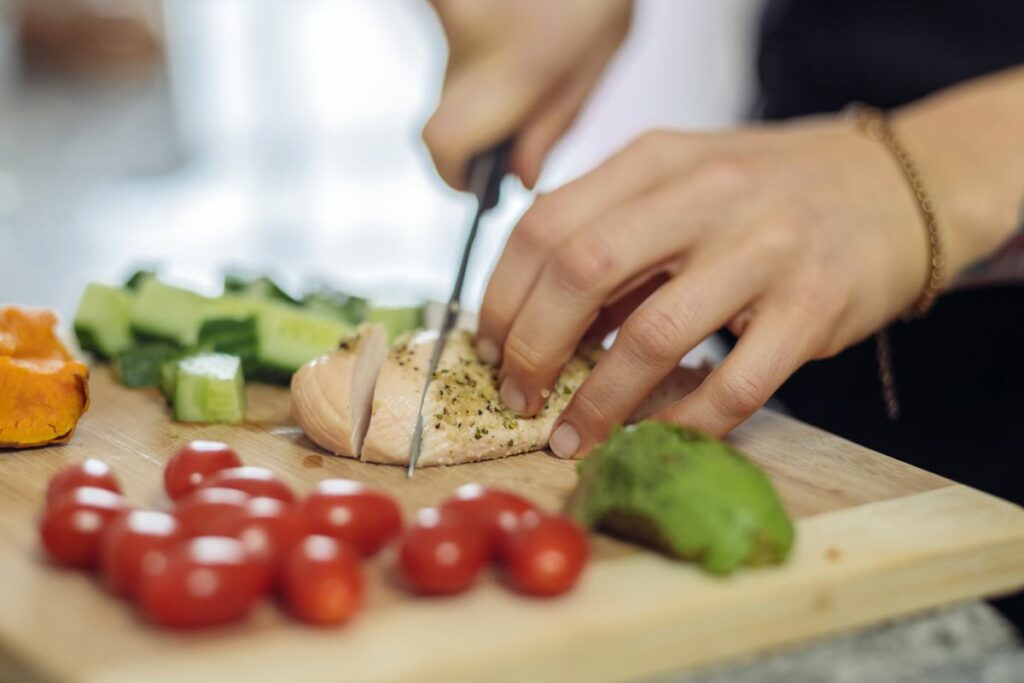
Cooking can be your zen moment or a family bonding activity. Prepping ingredients in advance saves time and energy. Have fun with it!
Batch Cooking: Cooking large quantities can save time. Make a big batch of chili or marinara sauce and freeze portions for later.
Mise en Place: This fancy French term just means “everything in its place.” Prepping ingredients before cooking makes the process smoother and more enjoyable.
Involve Family or Friends: Cooking can be a social activity. Invite family or friends to join in. It’s a great way to spend time together and share cooking tips.
Staying Flexible and Adapting
Meal planning is an art, not a science. While it’s great to have a structured plan, life has a way of throwing curveballs. That’s where flexibility comes in!
By staying adaptable, you can enjoy your meal planning journey without feeling constrained. Plus, there’s always room for a sweet treat now and then!
Listen to Your Body
Be in tune with your hunger and how different foods make you feel. Adapt and adjust your meal plan accordingly.
Hunger Cues: Sometimes we’re hungrier than usual, and that’s okay! Learn to recognize when your body needs more fuel and don’t be afraid to adjust portions.
Food and Mood: Pay attention to how certain foods affect your energy levels and mood. For instance, if a particular dish leaves you feeling sluggish, it might be worth tweaking the recipe or trying something different.
Trial and Error: Your meal plan is not set in stone. Experiment with different foods, and don’t be afraid to make changes if something isn’t working for you.
Making Room for Indulgences

Life’s too short to skip the cake! Follow the 80/20 rule – 80% nutritious choices and 20% indulgence.
Guilt-Free Pleasures: Denying yourself the foods you love can lead to a love-hate relationship with your meal plan. Indulge mindfully and without guilt.
Related Article: 11 Quick and Delicious Keto Dessert Ideas
Balance and Moderation: Having a slice of cake or a few fries doesn’t mean derailing your healthy eating plan. It’s about balance. Enjoy your treats in moderation.
Social and Special Occasions: Sometimes, a spontaneous dinner with friends or a family holiday can disrupt your meal plan. That’s okay! These moments are precious. Enjoy them, and then get back on track.
Remember, meal planning is a tool to enhance your life, not to limit it. Staying flexible and adapting to changes and cravings is key to making it a sustainable and enjoyable part of your routine.
Utilizing Technology for Meal Planning

In this modern era, technology has crept into almost every aspect of our lives – and meal planning is no exception.
With smartphones being our constant companions, it’s only natural to involve them in our culinary adventures. There’s an app for everything – even meal planning!
Smartphone apps like MyFitnessPal or Yummly can be your virtual sous-chefs, helping you keep track of your nutrition and find an abundance of recipes.
MyFitnessPal, for example, not only has a database of over 2 million foods but also allows you to log your meals and monitor your caloric intake and macros. This can be incredibly helpful for keeping your nutrition on point.
On the other hand, Yummly can be your inspirational culinary guide. With personalized recipe recommendations, it tailors suggestions to your dietary preferences and restrictions.
Plus, Yummly allows you to create shopping lists based on recipes you want to try, ensuring you don’t forget that crucial ingredient.
And the technological feast doesn’t end there. Many apps also integrate with smart home devices.
Imagine being able to check what’s in your fridge while you’re at the grocery store, or having your oven preheat itself just in time for the casserole you planned for dinner.
In addition, if you’re someone who loves to be organized, apps like Google Keep or Evernote can be used for jotting down recipes, creating shopping lists, and even meal planning schedules.
By embracing technology, meal planning becomes not only more efficient but also more enjoyable.
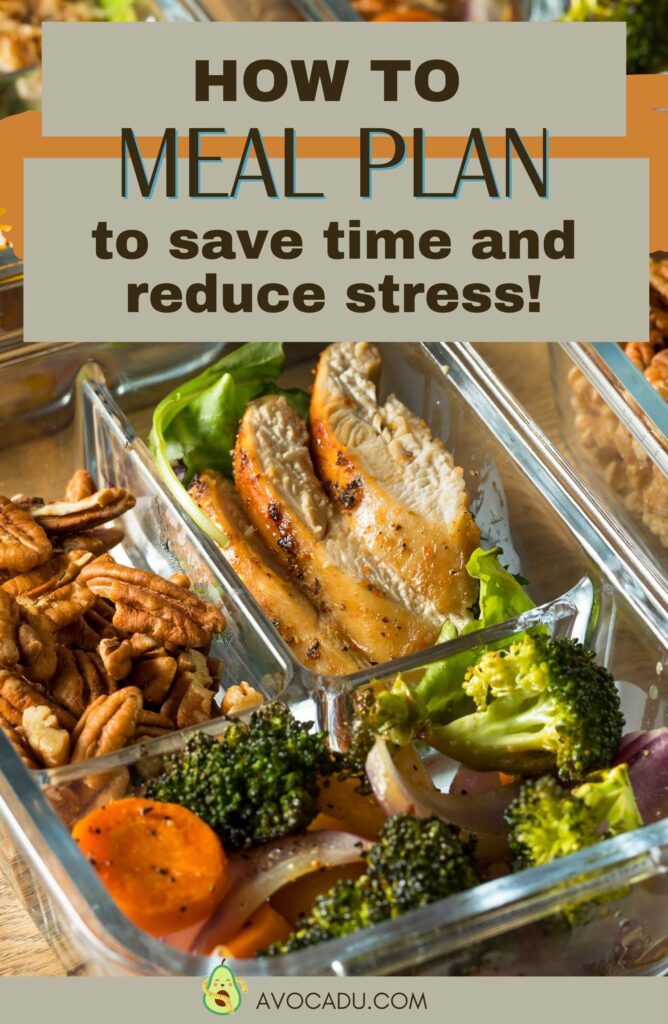
Kicking Off Your Culinary Journey: Final Thoughts & A Special Challenge
You’re now equipped with the essentials of meal planning for healthier eating. It’s simple: set your goals, plan balanced meals, stay adaptable, and make technology your ally.
Introducing the 21-Day Fat Loss Challenge Program:
As a final tip, if you’re a woman looking to lose weight quickly, the 21-Day Fat Loss Challenge Program can be a game changer. The program is designed to help you lose 10-21 pounds in just 21 days and includes:
- An Eating Guide and Approved Food List: Making it easier to choose the right foods.
- A Main Guide: Providing the fundamental information you need.
- A Diet Plan: Offering a structured eating approach.
- A Motivation Guide: To keep your spirits high throughout the challenge.
- Several Bonuses: Extra resources for enhanced success.

Embark on your meal planning adventure and consider giving the 21-Day Fat Loss Challenge a try if rapid weight loss is one of your goals.
